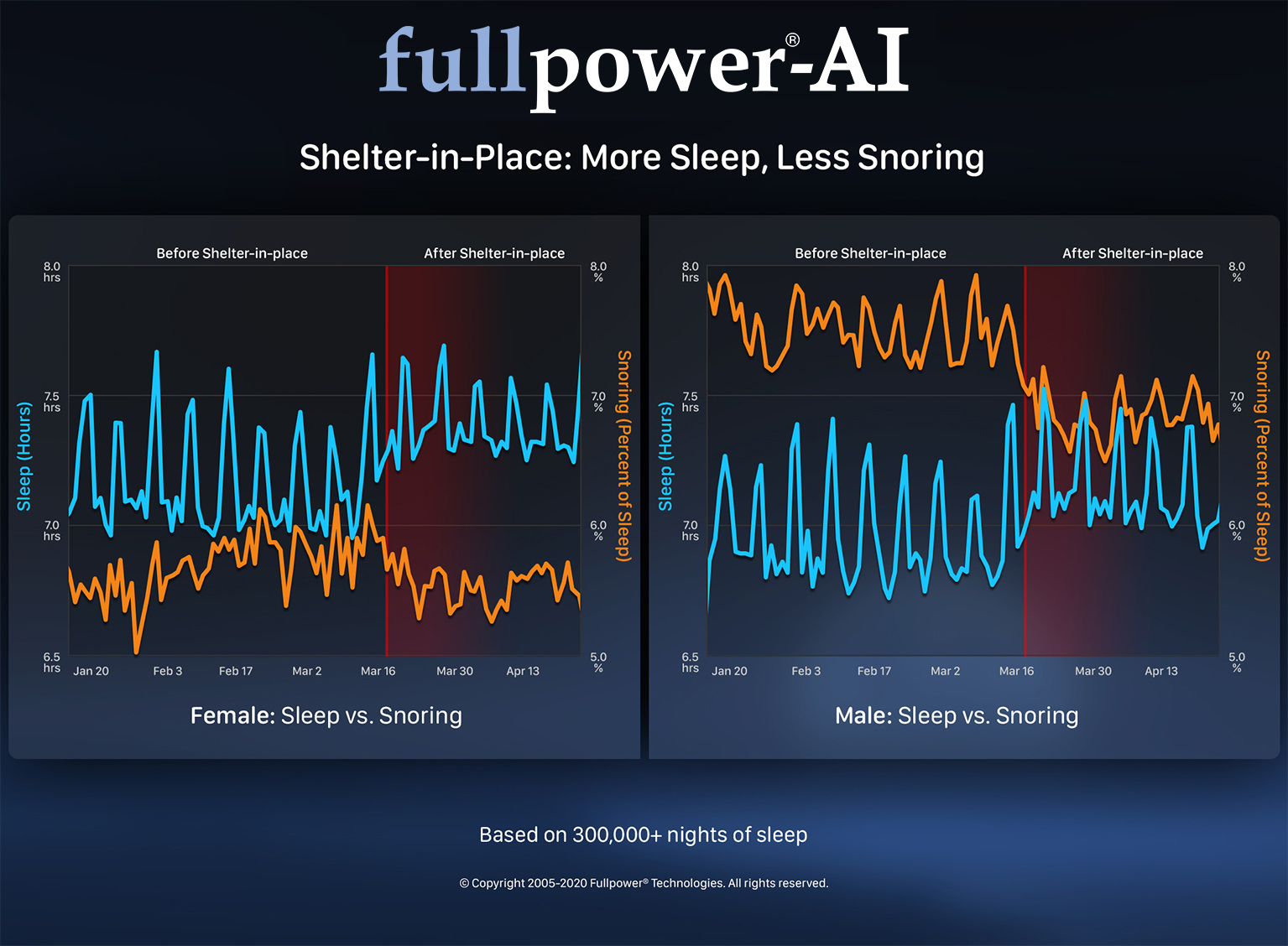
Previously we reported that the data shows, before and after shelter-in-place, our sleep patterns changed. On average we sleep longer get more REM sleep but get less deep sleep. In this analysis, we look at the data and observe that since sheltering-in-place we snore less. That’s true for females and males. Males tend to snore more than females as the analytics shows and Snore is a precursor to apnea and COPD. The www.fullpower.com solution can pinpoint apnea, asthma, COPD. For this infographic, there are potentially several explanations for the decrease in snoring. Scientifically, we learned that snoring tends to happen more during deeper sleep phases. Therefore less deep sleep could correlate to less snoring although we sleep longer with shelter-in-place. Of course, all of this needs to be investigated farther. The data shows that on average for both females and males shelter-in-place has decreased snoring! This study is based on over 300,000+ nights of recorded and analyzed sleep by Sleeptracker®-AI. The peaks are the weekends and the troughs are the weekdays in both sleep and snoring.